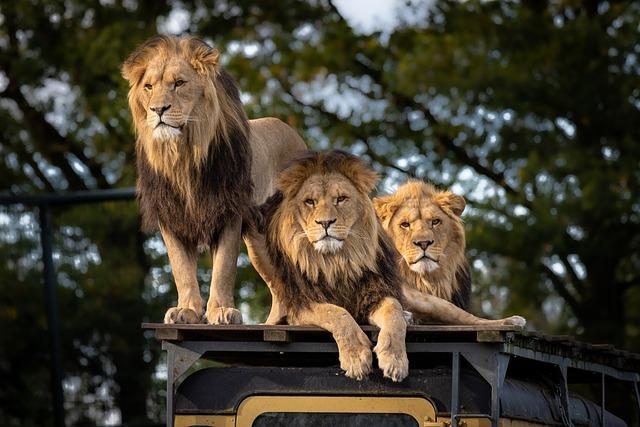Notifications

8 minutes, 23 seconds
-47 Views 0 Comments 0 Likes 0 Reviews

Introduction
Mount Kilimanjaro, Africa’s highest peak at 5,895 meters (19,341 feet), is a dream destination for trekkers and adventure seekers. However, climbing to such high altitudes comes with its own set of challenges, primarily due to lower oxygen levels. Altitude sickness is a common issue that can affect climbers, making proper preparation essential. Whether you’re an experienced mountaineer or a first-time trekker, knowing how to prepare for high altitude can significantly improve your chances of successfully summiting Kilimanjaro. This guide provides essential tips to help you acclimate properly, avoid altitude sickness, and have a safe and rewarding trek.
High altitude refers to any elevation above 2,500 meters (8,200 feet), where oxygen levels start to decline. As you climb higher, the air becomes thinner, making it harder for your body to get the oxygen it needs. This can lead to altitude sickness, which manifests in mild, moderate, or severe forms.
Headaches
Dizziness
Nausea or vomiting
Shortness of breath
Loss of appetite
Fatigue and weakness
Difficulty sleeping
If left unchecked, altitude sickness can progress to more serious conditions like High-Altitude Pulmonary Edema (HAPE) or High-Altitude Cerebral Edema (HACE), both of which can be life-threatening. Understanding the risks and preparing accordingly is crucial for anyone embarking on Mount Kilimanjaro tours.
While climbing Kilimanjaro does not require technical mountaineering skills, it does demand physical endurance. Training at least 8–12 weeks before your trek will help condition your body for the challenge. Focus on:
Cardio exercises: Running, cycling, hiking, and swimming to improve lung capacity.
Strength training: Leg and core exercises like squats, lunges, and planks.
Hiking practice: Go on long hikes with a weighted backpack to simulate the conditions of the climb.
One of the best ways to reduce the risk of altitude sickness is to spend time at high altitudes before your climb. If possible:
Train in high-altitude locations such as the Rocky Mountains or the Alps.
Arrive in Tanzania a few days early and take short hikes around Moshi or Arusha.
Consider pre-acclimatization by using altitude simulation masks or sleeping in an altitude tent.
Mount Kilimanjaro offers several routes to the summit, with some being better for acclimatization than others. The best routes include:
Lemosho Route (7–8 days): Offers gradual acclimatization and scenic beauty.
Machame Route (6–7 days): Provides good acclimatization through the “climb high, sleep low” method.
Rongai Route (6–7 days): Less crowded but has a steady ascent.
Longer routes give your body more time to adapt to the altitude, increasing your chances of a successful summit.
A key principle in altitude adaptation is “climb high, sleep low.” This means ascending to a higher altitude during the day but sleeping at a lower elevation to help your body adjust. Many Kilimanjaro routes incorporate this strategy naturally, but if you have the opportunity to do a short acclimatization hike before descending for the night, take it.
Proper hydration and nutrition are vital for maintaining energy levels and reducing the effects of altitude sickness.
Drink at least 3–4 liters of water daily to stay hydrated and help oxygen circulate in your body.
Eat high-energy foods like carbohydrates and lean proteins to maintain stamina.
Avoid alcohol and excessive caffeine, as they can contribute to dehydration.
One of the most commonly heard phrases on Mount Kilimanjaro tours is “Pole Pole,” which means “slowly, slowly” in Swahili. Rushing the climb increases your risk of altitude sickness. Walk at a slow, steady pace, allowing your body to adapt to the reduced oxygen levels.
Some trekkers take medication to help prevent or manage altitude sickness. Common options include:
Acetazolamide (Diamox): Helps speed up acclimatization by increasing oxygen levels in the blood.
Ibuprofen: Can help relieve headaches and inflammation associated with altitude sickness.
Dexamethasone: A steroid used in severe cases to reduce swelling in the brain.
Consult with your doctor before taking any altitude medication, as some may have side effects.
Altitude sickness can affect anyone, regardless of fitness level. If you experience severe symptoms such as confusion, trouble breathing, or a persistent headache that doesn’t improve with rest, it is crucial to descend immediately. Ignoring symptoms can lead to life-threatening conditions. Your guides on Mount Kilimanjaro tours are trained to recognize altitude sickness and will advise you accordingly.
The weather on Kilimanjaro varies drastically from the base to the summit. Pack appropriate clothing, including:
Layered clothing to regulate body temperature.
A high-quality sleeping bag rated for sub-zero temperatures.
Waterproof gear to stay dry in case of rain or snow.
Choosing the right tour operator is essential for safety and success. Look for companies with experienced guides, good safety records, and a strong emphasis on responsible trekking practices. Guides on well-established Mount Kilimanjaro tours monitor your health throughout the climb and ensure that acclimatization practices are followed correctly.
Climbing Kilimanjaro is a once-in-a-lifetime experience, but it requires careful preparation, especially when dealing with high altitude. By training properly, choosing an appropriate route, staying hydrated, pacing yourself, and listening to your body, you can minimize the risks of altitude sickness and improve your chances of a successful summit. Whether you’re a first-time climber or a seasoned trekker, following these preparation tips will help you enjoy a safe and memorable journey to Africa’s highest peak. Mount Kilimanjaro tours provide a structured way to experience this incredible adventure while ensuring the best possible chance of reaching the summit.
With the right preparation and mindset, you can conquer Kilimanjaro and stand on the “Roof of Africa” with confidence!

